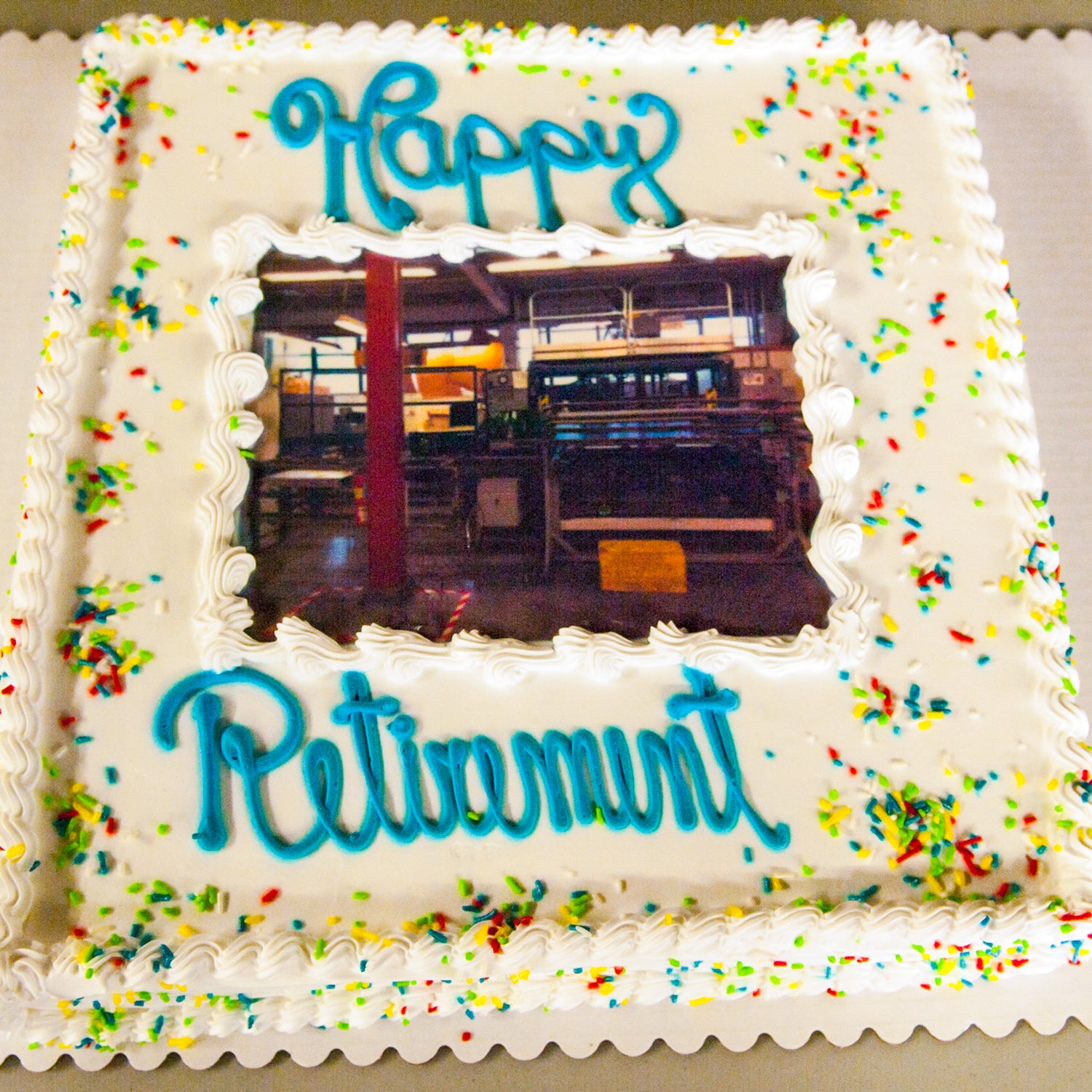For 38 years, all of Therm-a-Rest’s 20-by-72-inch inflatable mattresses—the big rectangular ones you probably grew up camping with—were produced on a single machine, called the Expedition Press. Earlier this week, Cascade Designs retired that machine, and with it, a piece of its company history.
There's some debate when the Expedition Press was built, though the general consensus is that it was before 1981—definitely less than 10 years after the homegrown Seattle company’s founding in 1972, around the time that it scaled up production and moved into the office space it still occupies. Â
Therm-a-Rest was by a trio of former Boeing engineers— Jim Lea, John Burroughs, and Neil Anderson—who wanted to make a more comfortable camping pad. At the time, closed-cell foam pads were the only ones available. Their idea: Put open-cell foam into an airtight, fabric case with a valve to manually regulate internal air pressure. In 1972, Burroughs filed a patent for their invention, which they’d named Therm-a-Rest.
With a patent filed and prototypes refined, they had to figure out how to mass-produce their mattresses. The only problem was that since no one else was making anything similar, no production machines existed. So the three founders had to invent one themselves.
Brandon Bowers, who is the company’s mattress category manager, says the original Expedition Press machine was modeled after a sandwich press. It looked like a typical hydraulic press, with a 40-pound metal frame that had a pinched edge and a quarter-inch cavity in the middle. Fabric was pinned to the edge of the frame, then bonded with the foam.
The mattress would come out hot, so line workers would carry the entire, 40-pound frame out of the press, dump the mattress into a vat of cool water, then put the frame back in the press. A pair of two workers removed the mattress from the water and started inflating it, while a second team put a new mattress into the press. “It was a very manual process,” says Bowers. “For some reason, for five to ten years, the press frame had this removable metal corner piece, which the workers would have to toss to each other. It was a right of passage that young guns would get it tossed at them when they weren’t looking.”
Over the years, the staff made minor tweaks and adjustments to the Expedition Press. By the time Bowers joined the staff in 1998, engineers had devised a way to make production faster (and safer) by installing a rolling conveyor belt, so that workers didn’t have to carry around the big, metal frame. At their fastest, Bowers says, a team of four production workers produced 500 mattresses in a single eight-hour shift. On average, the crew spent about 37 seconds per mattress.Â
In the early 2000s, in an effort to refresh and reinvent its product, Therm-a-Rest launched its series, which necessitated new machines. But the Expedition Press—and the two spin-off machines it had spawned, for the shorter and longer rectangular pads—continued to churn out the brand's Basecamp pads. Not surprisingly, however, those newer machines, which were able to produce both the new, tapered Prolite pads and the old rectangular ones, began to outpace the original trio of machines. The short- and long-pad machines were both retired a few years ago. The Expedition Press was not far behind.
“It was the most efficient machine for making that one type of mattress,” says Bowers. But, he adds, by the end it had become “a bit of a Frankenstein, because it had been changed throughout the years.” (Somewhere along the line, the frame changed, eliminating the need for the tossing of the corner piece. Then came the conveyor belt). Eventually, the company couldn't justify holding on to it any more.
Earlier this week, the company held a decommissioning ceremony for the beloved rig, which had been at Therm-a-Rest longer than many of the company’s employees. “We all recognized that this was an important piece of Cascade Designs history we were looking at,” says Bowers. They ran it one last time, and passed around the Expedition Press’s last pad for employees to sign.
The machine will be dismantled; what’s reusable will be reused in other Therm-a-Rest machines, and what’s recyclable will be recycled. Bowers says that the classic, rectangular Basecamp pads won’t be going away. The new machines built back in the early aughts will continue to produce Therm-a-Rest’s most iconic camping mattress.


